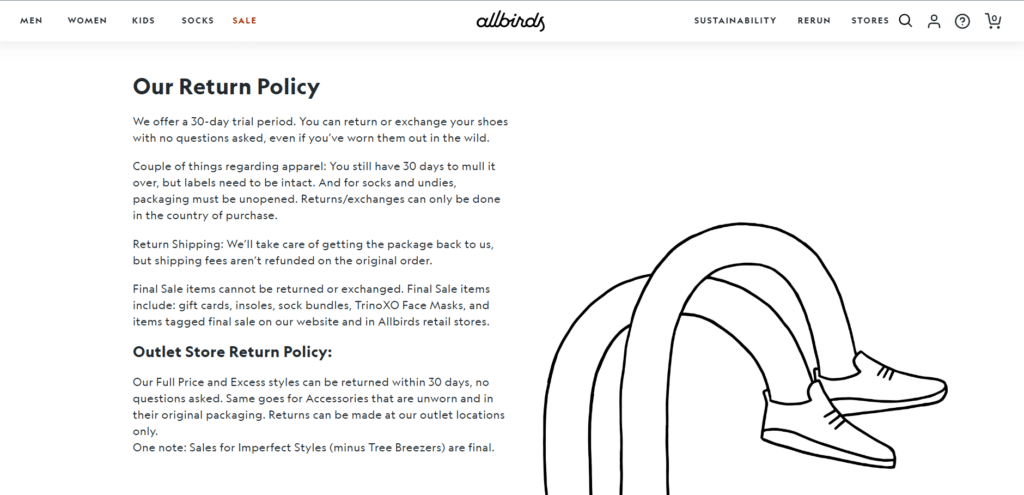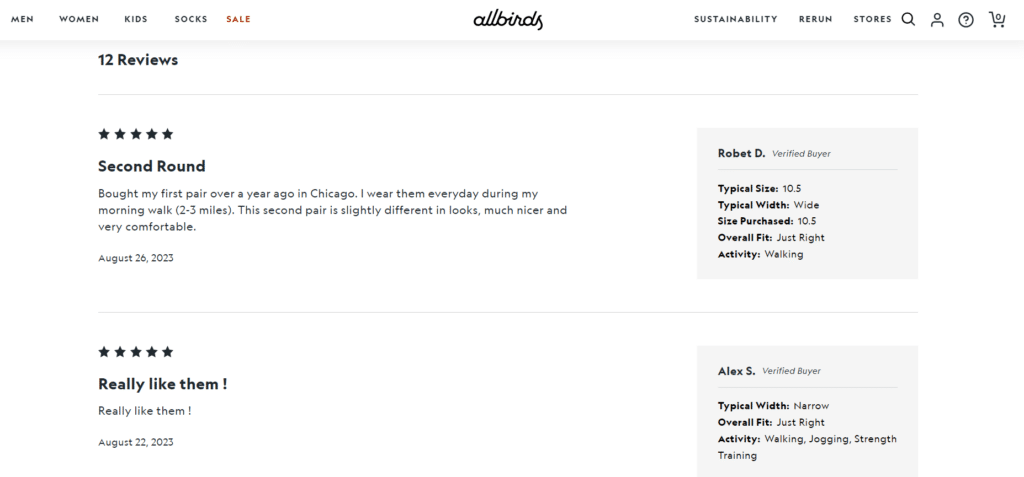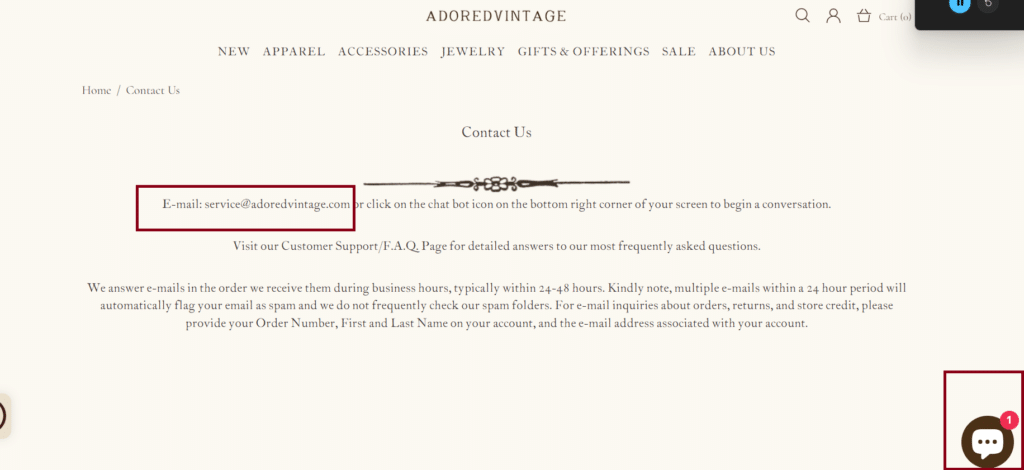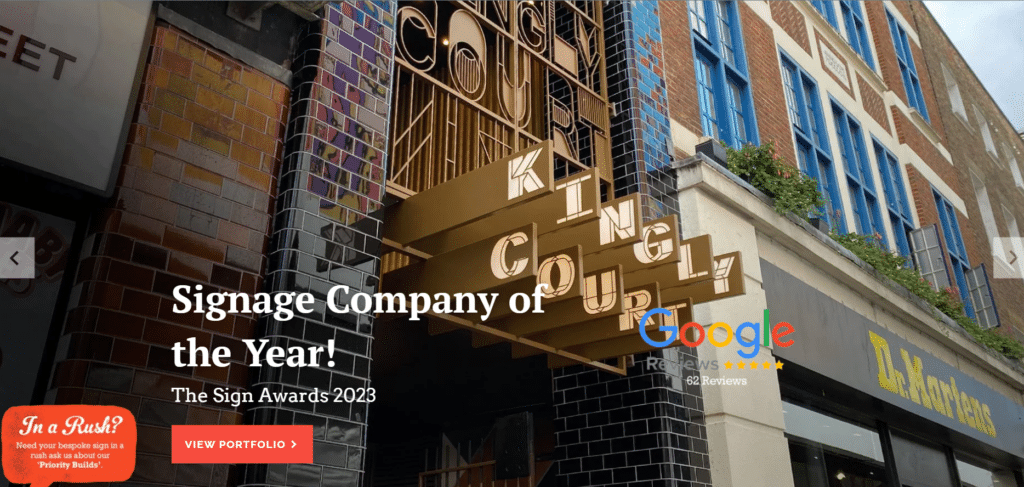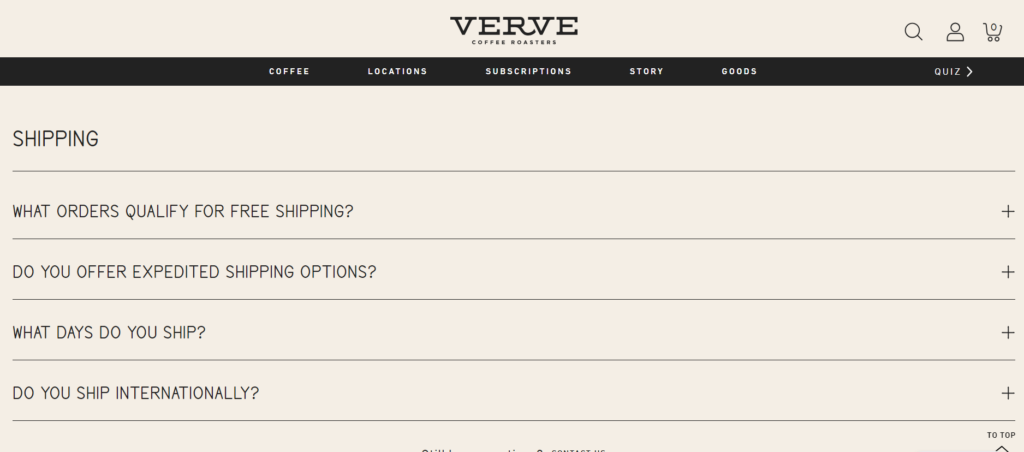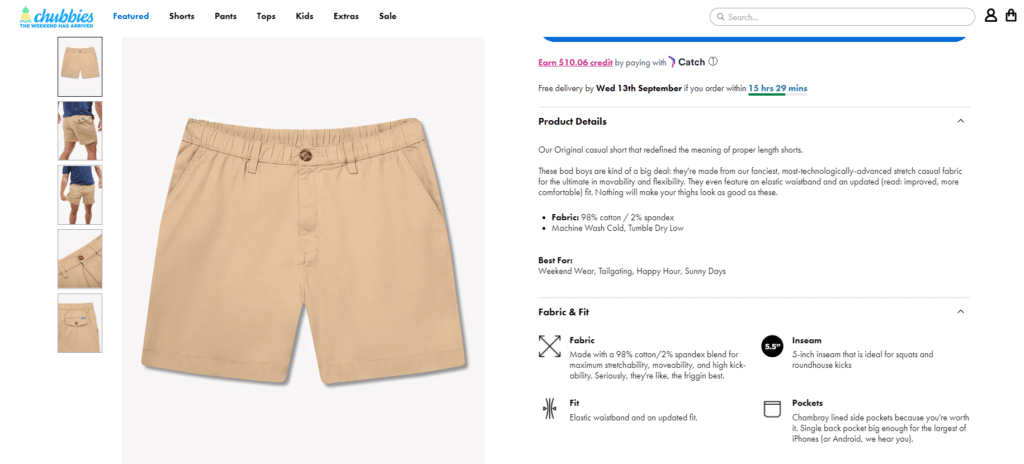Think of your e-commerce website as an international airport. Like an airport is the gateway for travelers to reach their destinations, your website is the digital gateway for shoppers seeking products and services.
Consider trust signals and security as the airport’s control tower and security protocols. They are the backbone, ensuring that flights take off and land safely, that passengers trust the process, and that their journey is smooth and hassle-free.
Trust signals are like the flight information displays and helpful staff at the airport. They guide customers, providing information and reassurance that their choice is right.
On the other hand, security is like the rigorous security checks and surveillance systems in place to protect passengers from potential threats.
As a passenger, if you’re not convinced about the security and protocols of an airport/airline, the chances of canceling your flight and never patronizing that airport will increase drastically.
In this article, I’ll explore how you can effectively utilize trust signals and security to improve conversions on your e-commerce website. I’ll delve into the world of trust signals and security measures, offering insights and strategies to ensure your users become paying customers.
Trust Signals in E-Commerce
Trust signals on your e-commerce website communicate reliability, credibility, and security to your visitors.
They are the virtual cues that assure customers that your online store is a safe and trustworthy place to shop.
These signals encompass various elements, including website design, content, and user interactions.
Numerous studies have shown that trust signals directly impact conversion rates:
- According to TrustedSite, Lack of trust badges indicates fraud to 49% of consumers.
- About 31% of consumers said their biggest concern when shopping online is having their credit card information stolen.
The Psychological Impact of Trust Signals
-
Social Proof
One of the most powerful psychological phenomena that trust signals leverage is social proof. People tend to rely on the behavior and opinions of others, especially when making decisions in uncertain situations.
Customer feedback is a prime example of social proof in action. When shoppers see that others have purchased and reviewed a product positively, it validates their potential purchase.
It’s a case of: “If others have made this choice and found it worthwhile, I can trust it too.”
-
Perceived Risk
Trust signals buffer against the perceived risks associated with online shopping. Customers who see badges, reviews, and secure payment options feel more comfortable and less wary of potential pitfalls, making them more likely to proceed with their purchases.
-
Cognitive Ease
Trust signals contribute to a sense of cognitive ease when navigating a website. A well-designed site with familiar trust badges and intuitive security features feels comfortable and trustworthy. On the other hand, a site lacking these signals can create cognitive strain and doubt.
-
Trust as a Precursor to Loyalty
Building trust through trust signals is not just about immediate conversion; it’s about laying the groundwork for long-term loyalty. Customers who trust your brand and have positive experiences are more likely to return for future purchases.
-
Emotional Reassurance:
Shoppers want to feel safe, valued, and appreciated. When a website prominently displays trust badges, it conveys that the business cares about its customers’ safety and satisfaction.
Importance of trust signals and security in e-commerce conversion.
Trust signals are not just optional add-ons but vital components that can make or break an online business.
Let’s consider the importance of having trust signals on your ecommerce page.
-
Enhanced Customer Confidence
Trust signals and security measures instill confidence in your customers. When visitors to your e-commerce site perceive it as secure and reliable, they are more likely to proceed with their purchases.
Knowing that their personal information, such as credit card details and contact information, is protected builds confidence.
This confidence directly translates into higher conversion rates, as customers are less hesitant to share their information and complete transactions.
-
Reduced Cart Abandonment
When shoppers feel confident in the security of their data, they are less likely to abandon their carts during checkout.
-
Higher Conversion Rates
Perhaps the most direct impact of trust and security is an increase in conversion rates. Customers who trust your website and feel confident in its security are more likely to convert from visitors to customers.
-
Positive Brand Reputation
Your reputation benefits when your business is known for taking customer security seriously and providing a trustworthy online experience.
Positive reviews, testimonials, and word-of-mouth recommendations further bolster your brand’s image.
A strong and positive brand reputation attracts new customers and encourages them to convert.
-
Compliance with Regulations
Trust and security measures ensure compliance with relevant regulations and standards, such as GDPR (General Data Protection Regulation) and PCI DSS (Payment Card Industry Data Security Standard).
Compliance demonstrates your commitment to protecting customer data and privacy, fostering trust.
-
Competitive Advantage
E-commerce is competitive, and trust and security provide a significant competitive advantage. You gain an edge when your website is perceived as more trustworthy and secure than your competitors.
-
Reduced Customer Support Burden
Customers who trust your site are less likely to seek extensive support or assistance.
For example, when I make transactions on some websites, and there’s a delay, I hardly feel the need to reach out to their customer care immediately because of the excellent experience I have had in the past.
Clear policies, secure transactions, and straightforward processes lead to a smoother customer journey. This reduction in support inquiries frees up resources and allows your team to focus on other critical tasks.
-
Long-Term Customer Relationships
Building trust through security and reliability fosters customer retention and long-term customer relationships. Customers who trust your brand are more likely to return for future purchases. Over time, this loyalty translates into sustained revenue, as these long-term customers contribute significantly to your conversion rates and overall business success.
Examples of Common Trust Signals To Use On Ecommerce Site
-
Clear and Transparent Return Policy
Similar to physical stores with flexible return policies, a transparent and customer-friendly return policy on your ecommerce site reduces purchase anxiety. Make sure your return policy is easily accessible and straightforward.
Consider offering hassle-free returns and prominently displaying the policy on product pages and the checkout process to build trust and ease customers’ fear of making a regrettable purchase.
-
Verified Customer Reviews and Ratings
Just as people value recommendations from friends in the real world, showcasing verified customer reviews and ratings adds a personal touch to online shopping.
Encourage customers to leave reviews and ensure they are prominently displayed on your product pages.
Address positive and negative feedback professionally to demonstrate your commitment to customer satisfaction and build trust in your brand.
-
Trustworthy Payment Options
Trusted payment options, such as credit cards, PayPal, and well-known digital wallets, provide a sense of security for online shoppers.
Offering a variety of payment methods and displaying recognizable payment logos at checkout reassures customers that their financial transactions are safe and secure.
-
SSL Encryption (Secure Connection)
Like locking your store’s front door, SSL encryption ensures that sensitive customer data, like personal information and payment details, is transmitted securely.

-
Contact Information and Customer Support

Responsive and helpful customer support reinforces trust by addressing concerns and inquiries promptly.
-
Third-Party Security Seals
Displaying security seals from reputable third-party providers like Norton or McAfee demonstrates that your website is monitored for security threats.
It reassures customers that their online transactions and personal information are safeguarded against potential cyber threats.
-
Trust Badges and Certifications
Trust badges and certifications, like the Better Business Bureau (BBB) Accredited Business Seal, showcase your commitment to ethical business practices. These symbols of trust signal that your ecommerce store operates with integrity and customer satisfaction in mind.
-
Industry Awards and Recognitions

One thing that physical store owners like to do is to display their awards on the wall so that customers can see, so why not employ the same strategy on your ecommerce website?
Similar to a physical store displaying awards on its walls, showcasing accolades on your website instills confidence and sets you apart from competitors.
-
Secure Checkout Process
Ensuring a secure and user-friendly checkout process is crucial. Implement features like progress indicators, visual cues, and trusted payment gateways to reduce cart abandonment and reinforce trust during the final stages of the purchase journey.
-
Professional Website Design
Your website’s design is important. Use a clean layout, high-quality images, and intuitive navigation to create a visually appealing and trustworthy online shopping environment.
An excellent example of a well-designed website is Allbirds.com.
-
Social Proof
Hearing about a popular restaurant from friends showcasing social proof through user-generated content, endorsements, or mentions from influencers or industry experts can significantly impact conversions.
Incorporate testimonials, case studies, or mentions from reputable sources to build trust and credibility.
-
Shipping and Delivery Guarantees
Guaranteeing reliable and timely shipping and delivery is essential for building trust.
Communicate estimated delivery times, offer tracking options, and provide delivery guarantees to alleviate concerns about delayed or lost shipments.
-
Secure User Accounts
Just as customers expect their personal information to be secure in a physical store, safeguarding user accounts is vital for ecommerce. Implement strong password policies, two-factor authentication, and regular security audits to protect customer accounts and instill confidence in their security.
-
Detailed Product Information
Providing comprehensive and accurate product information, including high-quality images, detailed descriptions, and customer reviews, ensures customers understand the products they purchase.

-
Trustworthy Partnerships and Affiliations
Highlight any partnerships, affiliations, or collaborations with reputable organizations or brands.
Just as shoppers trust well-known brands in physical stores, these affiliations can transfer trust and credibility to your ecommerce store.
Implementing these trust signals on your ecommerce website can help alleviate customer concerns, build trust, and ultimately increase conversion rates. Each trust signal is a building block in creating a more secure and reliable online shopping experience.
Tips for Using Trust Signals Effectively on an Ecommerce Site
Prominently Display Trust Badges
Here’s how to use Trust Badges on your ecommerce website effectively.
- Placement: Position trust badges prominently on your website, especially on the homepage, product pages, and during the checkout process. Ensure they are visible without being intrusive.
- Relevance: Use trust badges relevant to your customers’ specific concerns. For instance, display SSL or security badges to highlight the safety of payment transactions and antivirus badges to emphasize protection against malware.
- Verification: Only use trust badges from recognized and trusted organizations. Customers should be able to verify the legitimacy of the badges by clicking on them or accessing a verification link.
- Consistency: Maintain consistency in the placement and appearance of trust badges. This helps build familiarity and trust with your visitors.
On most websites, trust badges, especially those relating to payments, often appear on the footer or pages relating to payments.
By prominently displaying trust badges that are relevant and verified, you can reassure customers and increase their confidence in making purchases on your e-commerce site.
Leverage Customer Reviews:
Effectively leveraging reviews involves the following:
- Actively encourage your customers to leave reviews after purchasing. You can send follow-up emails, provide incentives, or create a user-friendly review submission process.
- Ensure that reviews are authentic and attributed to real customers.
- Engage with customers through reviews. Respond to feedback, address concerns, and show that you value customer input.
- Organize and categorize reviews by product or service type, allowing potential buyers to find information relevant to their purchase decisions.
Transparent Shipping and Return Policies
Transparent shipping and return policies are crucial for reducing uncertainty and building trust in e-commerce. Here’s how to make them effective:
- Clear Information: State shipping costs, delivery times, and return policies on product pages and during checkout. Provide detailed explanations of how returns work.
- Ease of Access: Ensure these policies are easily accessible through clear navigation menus or links in the website footer.
- Customer-Friendly: Design your policies with the customer in mind. Avoid hidden fees, provide hassle-free returns, and offer multiple shipping options.
- Consistency: Ensure that the policies you communicate online align with the actual customer experience.
Transparent shipping and return policies demonstrate your commitment to customer satisfaction and minimize potential sources of doubt, ultimately fostering trust and encouraging conversions on your e-commerce site.
Conclusion
Websites with malicious intent put a lot of effort into convincing unsuspecting customers that they’re the real deal, so what excuse do you have as a legitimate website not to put in as much effort or more to assuring your customers of their online safety while they’re on your website.
To put things into context, Imagine you’re in your customers’ shoes and consider how they perceive your website at every step of their shopping journey. If you think your website is bad, it is ten times worse for your customers.
It’s all about addressing concerns as they pop up and guiding shoppers through each stage of the conversion process. These signals assure them that your site is the real deal—legitimate, secure, and not a fluke.


